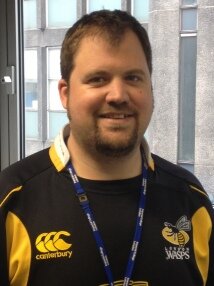Dr Alexander Webb

During Dr Alexander Webbs doctoral training at King's College London his research focused on the role of ATP-binding cassette (ABC) transporters in the physiology of Streptococcus mutans. This organism was originally isolated from carious lesions of the tooth. Using physiological and molecular studies he was able to: identify and characterise an ABC transporter (RnsBACD) involved in the uptake of ribonucleosides; identify and characterise an ABC transporter (MalXFGK) involved in the uptake of maltotriose and longer maltodextrins; further clarify the subtrates taken up by the previously characterised ABC transporter MsmEFGK; show that ABC-ATPases MalK and MsmK are interchangeable and can energise both the Msm and Mal transport systems; identify and characterise the principle phospoenolpyruvate-dependent phosphotransferase maltose system (MalT).
Previous postdoctoral projects include:
- Designing padlock probes (molecular inversion probes) for the identification of different Brucellae (in the group of Dr Sally J. Cutler).
- Identification and characterisation of two-enzymes system for glycolipid and polyglycerolphosphate lipoteichoic acid synthesis in the Gram-positive pathogen Listeria monocytogenes (in the group of Prof. Angelika Gründling).
Current research:
Dr Webb uses synthetic biology to build affordable and molecular cell-based biosensors as generic platforms that can be applied to quickly and easily detect parasites via their protease signatures.
The causative agents for schistosomiasis are fluke worms of the Schistosoma genus, and infection only occurs when the cercarial larvae are able to penetrate the skin. To facilitate this, the cercariae secrete an elastase possessing defined substrate specificity. As a proof of concept, Alexander's project takes advantage of this property of the cercarial elastase, and has used it to design and create biosensors that are specific in targeting Schistosoma.
The design of the biosensors is based on a two-pronged approach:
- An accurate detection system which is targeted to the cercarial elastase.
- An easily measurable output.
Using synthetic biology approaches engineered through Dr Webbs research the biosensors are “housed” in two bacterial chassis, Bacillus subtilis and Escherichia coli, he and his colleagues have further designs that will enable for a cell-free based biosensor.